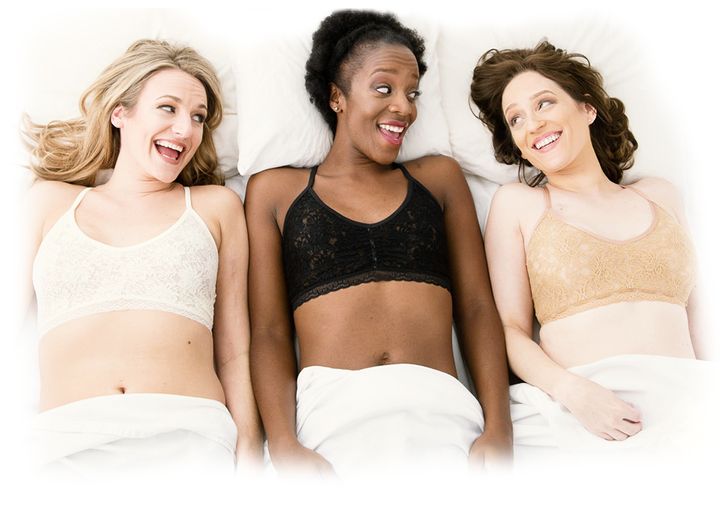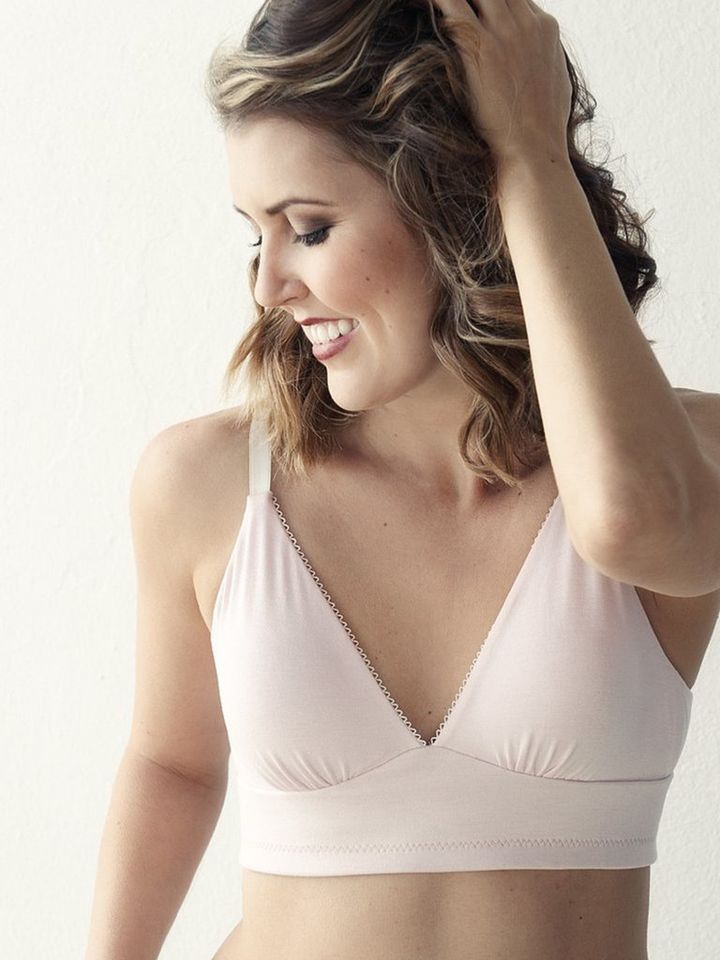
As a newlywed cancer survivor, Dana Donofree discovered that her pretty pre-surgery bras no longer fit or provided the appropriate support.
Breast surgery patients have special needs and reconstruction surgery is quite different from cosmetic breast surgery in that there is almost no breast tissue left. Wires and fitted cups usually cause discomfort. Women actively undergoing treatment have certain needs, as do post-operative patients, and finally there is a wide variety in surgeries. Some women have one breast, others have two, some have reconstruction, some have prosthetics. The AnaOno brand effectively addresses all of these needs in a price range of about $38-$58 for a bra.

After a successful and fast-moving career in fashion, following her cancer treatment and breast surgery, and then her wedding, Donofree established AnaOno as a primarily online business in 2014.
Steve Mariotti: Tell us more about the statistics of women who develop breast cancer. What is the age breakdown?
Dana Donofree: I was the only woman under 30 obtaining treatment at the hospital I attended. Now I get introduced to young women with breast cancer all the time, but that was not the case in 2010. About 300,000 women a year are diagnosed with breast cancer, and less than 40,000 of them are under 40. I didn’t draw the lucky straw. With my actual type of cancer and my age, I am .1% of women diagnosed annually. About a third of the women diagnosed with breast cancer die annually from it.
SM: Did you ever have any of those “why me?” moments about your illness?
DD: I feel like everything happens to us for a reason, maybe my reason is to come and do what I am doing now, to help be a voice of hope for other young women with this disease. Maybe that’s my purpose. I often think that if I could take the cancer back, would I do so, because it’s made me who I am today and given me things I didn’t have before. I think the answer is no.

SM: Early on in your recovery period, when you were still actually fighting for your life, you came up with this business idea for AnaOno in which so many people are now interested. Tell us more about that.
DD: I actually woke up from a chemo dream sweating and miserable, with no hair, no eyebrows, and said to myself, “You’re a fashion designer. You have the experience. Make something of all of this,” and I was actually crazy enough to do it. I got out my sketchpad the next morning and came up with ideas and silhouettes and began to think about what I was going to call the company. When I talked to other women about their bra problems, I learned so much about how they felt afterwards, personally, in intimate settings, sexuality. Then I asked my plastic surgeon about it. He urged me to design quality intimates for the breast cancer community. “You have to do this,” he said. With the doctor’s sign-off, somehow I felt this idea was really legit. Then I got so much more encouragement and just kept on going.

SM: Were you afraid of people’s reactions?
DD: Initially I did feel all alone in this matter. I couldn’t really talk to my doctors about how I wanted to look my best, how I wanted to feel comfortable when being intimate with my husband. When I opened the conversation with other women, I quickly found how similar we all were in this matter and yet it was not openly discussed. I asked, “why is nobody talking about our intimacy, sexuality and body image after cancer?” and then I used my various experiences to create products which did not exist elsewhere. Everything was coming from this place of wanting to feel beautiful, sexy and attractive.

SM: So how did you make the shift from ideas to actually starting a bra-selling business?
DD: I just started designing. All the existing mastectomy bras on the market were just so grandma but even grandma did not want to wear a mastectomy bra. I decided to design these garments in a totally different way. I found my factories and fortunately I had a Rolodex filled with people who were really willing to help me. My husband and I were able to finance the startup. I resigned from my full time job and three weeks later a national newspaper and online article appeared which really changed things for me. I began to do a lot of demographic research. I went for an audition for the television show “Shark Tank,” and that’s really when I got the business plan together, in 2013. I determined I was my ideal customer, I was my case study. I thought about all the different parts of my cancer journey for which I had no bra solutions. I wanted to replace the styles of bras I had in my life before cancer with ones that worked afterward. I needed date night, I needed casual, I needed gym, I needed work, I needed post-op. Back in the day, for many breast cancer surgery patients, they could barely get dressed anything like normally for as much as a year after their operation. AnaOno largely solves that issue. I have a real sense of living in the moment, and these products are part of that healthy, feminine support system.
SM: So how did you make the shift from ideas to actually starting a bra-selling business?
DD: I just started designing. All the existing mastectomy bras on the market were just so grandma but even grandma did not want to wear a mastectomy bra. I decided to design these garments in a totally different way. I found my factories and fortunately I had a Rolodex filled with people who were really willing to help me. My husband and I were able to finance the startup. I resigned from my full time job and three weeks later a national newspaper and online article appeared which really changed things for me. I began to do a lot of demographic research. I went for an audition for the television show “Shark Tank,” and that’s really when I got the business plan together, in 2013. I determined I was my ideal customer, I was my case study. I thought about all the different parts of my cancer journey for which I had no bra solutions. I wanted to replace the styles of bras I had in my life before cancer with ones that worked afterward. I needed date night, I needed casual, I needed gym, I needed work, I needed post-op. Back in the day, for many breast cancer surgery patients, they could barely get dressed anything like normally for as much as a year after their operation. AnaOno largely solves that issue. I have a real sense of living in the moment, and these products are part of that healthy, feminine support system.
